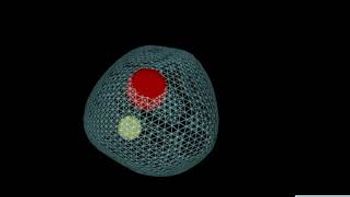
Inflatable penile prosthesis and mini male sling
This video, from Robert J. Valenzuela, MD, demonstrates the placement of a three-piece inflatable penile prosthesis and a mini male sling for the definitive treatment of post-robot-assisted prostatectomy erectile dysfunction and climacturia.
This video, from Robert J. Valenzuela, MD, as well as videos from
This video demonstrates the placement of a three-piece inflatable penile prosthesis and a mini male sling for the definitive treatment of post-robot-assisted prostatectomy erectile dysfunction and climacturia. The procedure is carried out through a midline extended scrotal incision. Once the corpora are exposed, the urethral scrotal septum is taken down to the level of the bulbar urethra and just below the bifurcation of the corpora. The ishiocavernosum is exposed bilaterally.
The distance from right to left lateral corpora is then measured to determine the size of the segment of mesh. In the video, Dr. Valenzuela explains why he uses the Virtue Male Sling over other materials. Once the segment of the sling is prepared, it is loosely secured to the lateral aspect of the corpora just above the ishiocavernosum using 2-0 Ethibond suture. This location is ideal since it will be within the inflatable portion of the prosthesis.
The corportomies for placement of the IPP are created just distal to the sling. The position of the sling does not interfere with the placement of the prosthesis. Dr. Valenzuela uses Metznbaum scissors for dilation of the corpora to the level of the mid glans.
Once the prosthesis is placed, the position of the sling is tested to ensure that it is loosely placed with the prosthesis deflated. A Debakey forceps is easily passed between the urethra and the mesh. The prosthesis is then inflated. The sling flattens out against and creates pressure on the urethra. By this mechanism, mild stress urinary incontinence and climacturia during sexual activity are controlled.
Dr. Hotaling: Dr. Valenzuela demonstrates a similar technique to Dr. Levine with meticulous tissue handling and excellent exposure of the relevant structures. He also uses the ischiocavernosum as a reliable landmark for where to place the sling. He uses Debakey forceps to ensure the sling is not too tight after placing a penile prosthesis in optimal position.
Dr. Valenzuela is director of penile prosthesis surgery and assistant professor of urology, Icahn School of Medicine at Mount Sinai, New York.
'Y'tube Section Editor James M. Hotaling, MD, MS, is assistant professor of surgery (urology) at the Center for Reconstructive Urology and Men's Health, University of Utah, Salt Lake City.
Newsletter
Stay current with the latest urology news and practice-changing insights — sign up now for the essential updates every urologist needs.




















